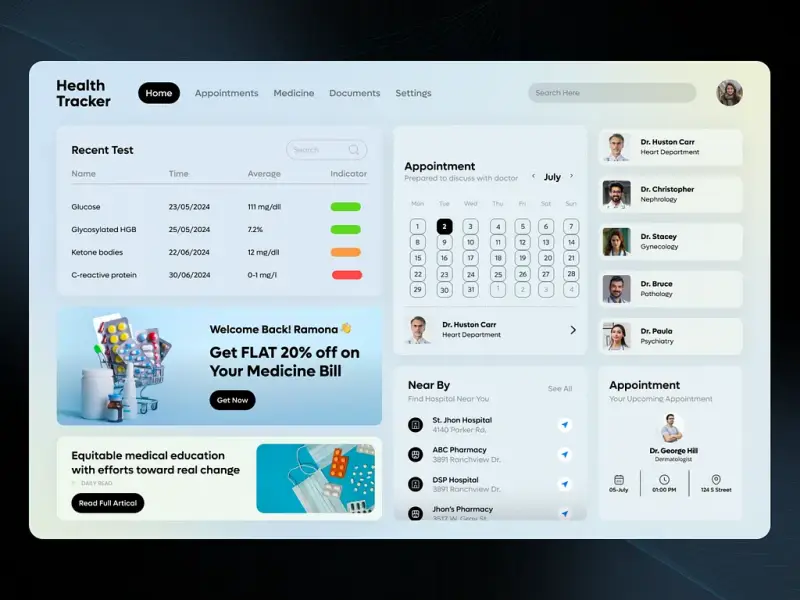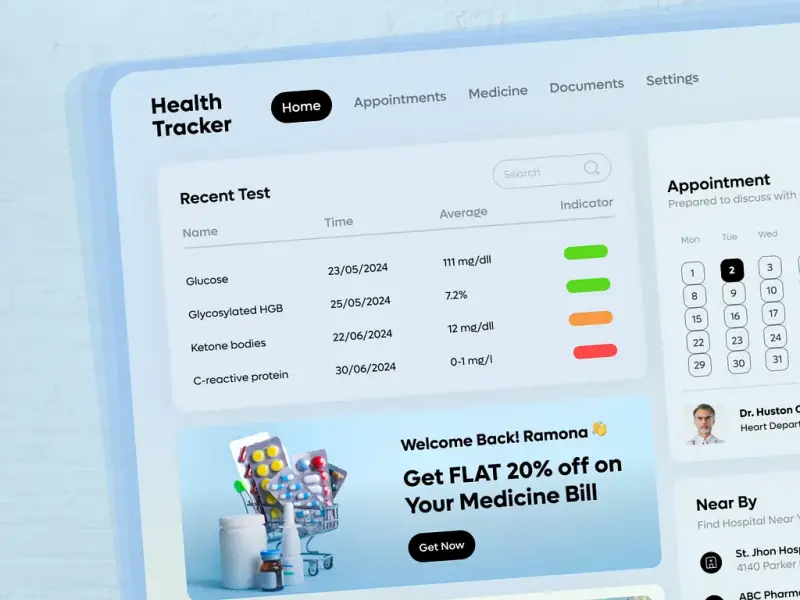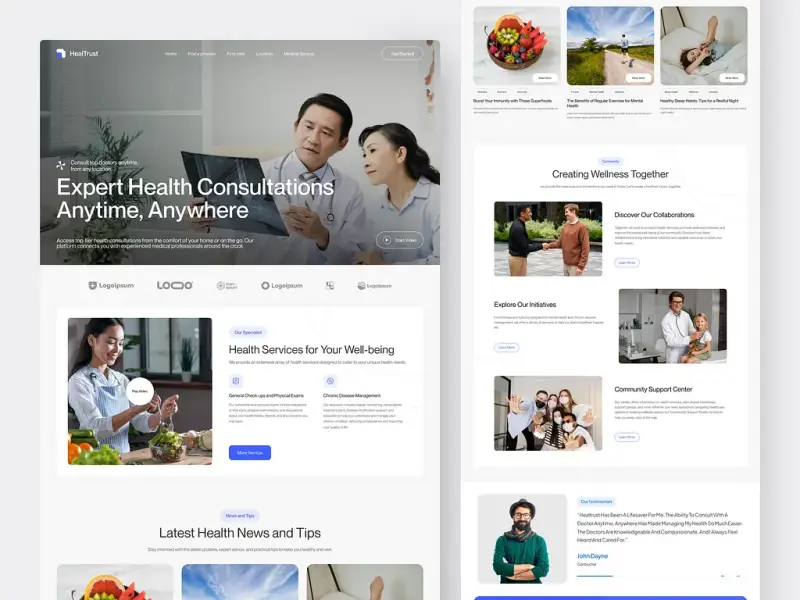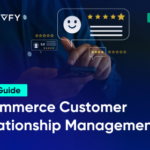Top 10 Patient Engagement Software Platforms for 2025
- TECHVIFY Team
- February 3, 2025
- Knowledge, Best practices
- 0 Comments
With so many patient engagement software solutions available, how can you be sure you’re choosing the best fit for your healthcare facility?
Traditionally, patient engagement was all about keeping patients informed and ensuring they followed through on their responsibilities. This often meant using tools like SMS, email, or phone calls to send reminders, instructions, and notifications. In essence, it focused on encouraging patients to behave in a certain way—showing up on time, arriving prepared, or following prescribed instructions—so providers could deliver care efficiently.
But over the past decade, patient engagement has grown into something much bigger. Today, it’s about more than just reminders and notifications. It’s about creating meaningful touchpoints with patients to improve their overall experience, access to care, and health outcomes. Features like digital forms, online check-ins, patient surveys, and more are now central to what it means to truly engage with patients in a digital age.
Core Functions of a Digital Patient Engagement Software
At its most basic, every digital patient engagement platform should include the following essential features, delivered via email, text, or phone:
- Appointment Reminders: Tools to confirm, cancel, or reschedule appointments easily.
- Broadcast and Ad Hoc Messaging: The ability to send general updates or one-off messages to patients.
- Procedure Instructions: Sending pre- and post-procedure instructions to ensure patients are informed and prepared.
Patient engagement software
These features focus on one primary goal: improving patient adherence. However, if your goal is to go beyond adherence and create a better overall patient experience, you’ll need a platform that offers more advanced capabilities.
To truly enhance patient outcomes, access, and experience, look for a platform that includes:
- Digital Forms: Allow patients to fill out and submit forms online, making data collection easier and mobile-friendly.
- Patient Surveys: Gather feedback to measure patient satisfaction and identify areas for improvement.
- Task Management: Enable staff to centrally track and complete tasks related to patient actions or requests.
- Two-Way Communication: Let staff and patients communicate seamlessly via chat or text.
While these features are impressive on their own, what sets a great digital patient engagement platform apart is its customizability and configurability. A flexible platform allows you to connect these features into tailored workflows that support health outreach campaigns, gaps-in-care follow-ups, and more.
When all these features work together, the benefits for both patients and providers are undeniable. Here’s what you can expect:
- Patients arrive on time and better prepared for their appointments.
- Fewer no-shows and less appointment leakage, improving scheduling efficiency.
- Increased automation reduces the need for manual staffing, saving time and resources.
- Providers can focus on care delivery, thanks to streamlined operational workflows.
- Improved patient outcomes through better adherence and proactive care management.
- Reduced overhead costs, like paper, printers, and other office supplies.
- Happier patients who are more likely to leave glowing reviews online.
10 Digital Patient Engagement Platforms: A Review
Choosing the right patient engagement software is essential for improving patient adherence, satisfaction, and overall experience. With so many platforms on the market, finding a solution that aligns with your healthcare organization’s unique needs can feel overwhelming.
To simplify your decision-making process, we’ve reviewed the ten best patient engagement platforms available today. Below, you’ll find a breakdown of their key features, strengths, and potential drawbacks.
Platform #1: Relatient
Relatient offers a comprehensive patient engagement solution with key features like reminders and patient satisfaction surveys. More recently, it has expanded its offerings by acquiring Dash, a self-serve appointment booking solution.
Pros
- Easy Operation: Patients can use Relatient without downloading an app, creating a username, or logging into a portal, making it exceptionally user-friendly.
- Survey Capabilities: Relatient enables organizations to collect patient satisfaction feedback through surveys in addition to sending reminders and notifications.
Cons
- Limited Forms Capabilities: While Relatient handles basic engagement needs well, its forms customization options are not as robust as some competitors. This can limit flexibility when collecting patient data during different stages of care.
Platform #2: SolutionReach
SolutionReach has over 20 years of experience in the patient engagement space. Originally focused on dental practices, it has since expanded to serve a variety of healthcare organizations with features like patient recall, messaging, and surveys.
Pros
- Diverse Capabilities: SolutionReach offers core patient engagement features while also supporting modern needs like patient marketing and acquisition.
Cons
- Customer Service Complaints: A common concern among users is poor customer service and limited support, which can make troubleshooting and implementation more challenging.
Platform #3: Simple Interact
Simple Interact is a front-office automation platform that excels at both core patient engagement software solutions and broader goals like improving patient outcomes, access, and experience. It offers a range of features, including digital forms, two-way SMS, task automation, and reputation management tools.
Pros
- Comprehensive Solution: Simple Interact addresses both basic and advanced patient engagement needs, helping healthcare organizations achieve better outcomes.
- Highly Customizable: The platform is designed to meet unique organizational requirements without requiring coding changes, ensuring it adapts to your specific needs.
- Fast Implementation: With a dedicated team of UX designers, Simple Interact quickly translates your business needs into fully tested, ready-to-use solutions.
- Proven Results: Simple Interact customers report impressive outcomes, including a 75% appointment confirmation rate, 25% reduction in no-shows, and 25% reduction in appointment leakage. Customers also see improvements in patient intake, satisfaction, and online reputation.
- Exceptional Support: The platform provides industry-leading customer service, offering training, ongoing customization, and best practices to maximize utilization.
Cons
- No Self-Booking Feature: While it allows patients to submit appointment requests, Simple Interact doesn’t currently support full self-booking functionality.
Patient engagement software solutions
Platform #4: Phreesia
Phreesia is a well-established digital platform best known for its focus on digital check-ins and payment collection. It also includes patient engagement features like messaging and appointment reminders.
Pros
- Established Track Record: Phreesia has been in the industry since 2005, making it a trusted and reliable option.
- EHR Integration: It integrates with many electronic health records (EHR) systems, streamlining workflows for healthcare providers.
Cons
- Learning Curve: Phreesia introduces an entirely new dashboard separate from your existing EHR system, which can make implementation and staff training more time-intensive.
Platform #5: athenaCommunicator
athenaCommunicator is the patient communication service integrated with the popular EHR platform athenaOne. It provides essential tools like a patient portal, payment capabilities, appointment scheduling, and basic patient engagement features like reminders.
Pros
- Sufficient for Small Practices: For smaller healthcare practices with limited needs, athenaCommunicator offers adequate tools to serve as a basic digital patient engagement platform.
Cons
- Limited Customizability: While athenaOne excels as an EHR, athenaCommunicator has the typical constraints of a patient portal. Larger organizations or those with more complex needs may find its features insufficient.
- Reliance on Third-Party Vendors: To address gaps in functionality, athenahealth offers integration with third-party vendors, such as Simple Interact, through its marketplace. This may add complexity and additional costs.
Platform #6: Intrado HouseCalls Pro
With over 30 years in the industry, Intrado HouseCalls Pro (formerly Telavox) has evolved through acquisitions and now offers a range of patient engagement services, including appointment reminders, broadcast messaging, live chat, care management, and referral management.
Pros
- Robust Features: Intrado HouseCalls Pro provides a comprehensive suite of tools aimed at improving patient adherence, outcomes, and experience.
Cons
- Service Stability Issues: As a large vendor not exclusively focused on healthcare, Intrado HouseCalls Pro has been reported to suffer from spotty service and reliability issues.
Platform #7: mConsent
mConsent is an all-in-one patient engagement platform designed to enhance healthcare providers’ efficiency while improving the patient experience.
Pros
- User-Friendly Interface: Offers an intuitive platform that simplifies engagement for both patients and providers.
- Comprehensive Features: Includes digital forms, automated appointment reminders, online scheduling, insurance verification, self-check-in kiosks, and patient reactivation tools.
- Reputation Management: Helps attract new patients by collecting and managing patient reviews.
- Practice Analytics: Provides insights and analytics to improve operational efficiency and patient care.
Cons
- Best for Small to Mid-Sized Practices: While mConsent offers excellent features, it may lack the scalability and advanced customization options needed by larger healthcare organizations.
Patient engagement platforms
Platform #8: Kareo
Kareo is a comprehensive practice management platform that combines patient engagement software solutions with operational efficiencies to streamline workflows for healthcare providers.
Pros
- Integrated Tools: Combines patient scheduling, reminders, intake forms, and engagement tools into a single platform, reducing the need for multiple software solutions.
- Automation Features: Automated reminders and paperless intake processes save time and improve accuracy.
- Self-Service Options: Patients can book appointments and check in through self-service kiosks, enhancing convenience.
Cons
- Limited Advanced Features: While Kareo is effective for general practice management, it may not offer the depth of customization or specialized tools required by larger or highly specialized practices.
Platform #9: Patterson Dental
Patterson Dental specializes in software solutions tailored for dental practices, offering tools to improve patient engagement and streamline administrative tasks.
Pros
- Dental-Specific Features: Includes appointment scheduling, secure patient communication, and digital forms tailored specifically for dental practices.
- Patient Education: Provides educational resources to help patients better understand dental procedures and oral health, improving engagement.
- Practice Analytics: Offers insights to help dental practices optimize performance and enhance patient care.
Cons
- Limited to Dental Practices: While Patterson Dental is excellent for dental providers, its narrow focus means it’s not suitable for other types of healthcare organizations.
- Lacks Advanced Customization: Practices with unique needs may find the platform’s features less flexible than those of more customizable solutions.
Platform #10: WEAVE
WEAVE is a robust communication platform designed to enhance patient engagement software solutions and streamline administrative workflows. With features like automated messaging, digital forms, and insurance verification, WEAVE simplifies communication between patients and providers while improving the overall patient experience.
Pros
- Streamlined Communication: Offers two-way texting and automated appointment reminders to keep patients informed and engaged.
- Digital Tools: Features like digital forms and insurance verification reduce paperwork and minimize administrative burdens.
- Reputation Management: Collects and manages online patient reviews, helping practices build credibility and attract new patients.
- Practice Insights: Provides analytics to help healthcare providers monitor and improve performance.
Cons
- Best for Small to Mid-Sized Practices: Larger healthcare organizations might find WEAVE’s capabilities insufficient for handling more complex or large-scale operations.
Conclusion
Choosing the right patient engagement software is critical to improving patient satisfaction, streamlining workflows, and achieving better health outcomes. With so many platforms to choose from, understanding the unique needs of your healthcare facility is the first step in making an informed decision. Whether you’re looking for a platform that emphasizes automation, customizability, or patient satisfaction, the options reviewed in this blog provide a range of solutions to fit your requirements.
At TECHVIFY, we specialize in crafting tailored digital solutions to help healthcare organizations like yours thrive. Our team of experts can guide you through selecting, customizing, and implementing the perfect patient engagement software to meet your goals.








